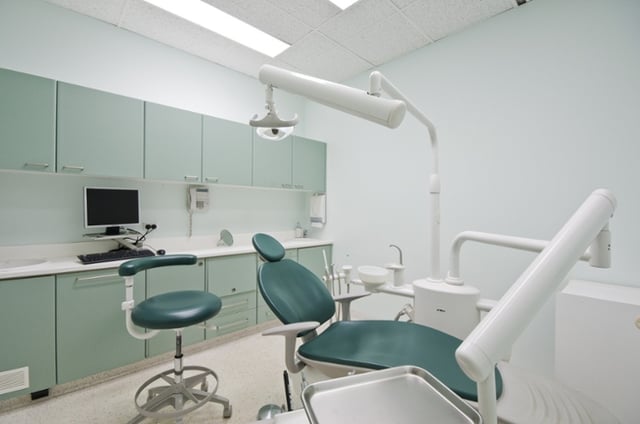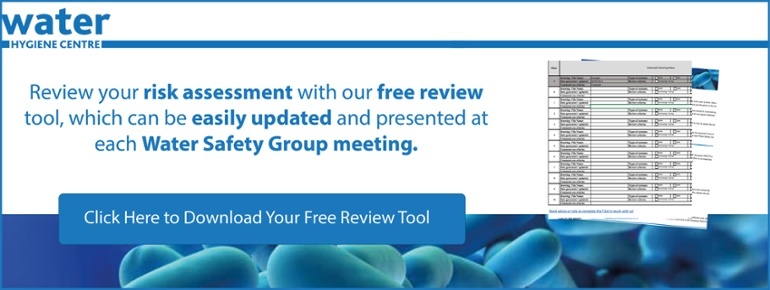Dental practices, like all other healthcare premises, have a legal duty to provide safe care and treatment to patients and comply with Health and Safety law.
Dental practices are typically supplied by the public mains water supply, which is used for handwashing, cleaning, decontamination, and drinking. The use of this water by staff and patients represents a risk of exposure to Legionella bacteria, which must be managed.
Dentists and Legionella Guidance
The Health & Safety Executive’s (HSE) Approved Code of Practice (L8) provides advice to all duty holders on how to comply with legal duties set by the Health and Safety at Work etc Act 1974 (HSWA) and the Control of Substances Hazardous to Health Regulations 2002 (COSHH). Healthcare providers, such as dental practices, must also meet the Health and Social Care Act to prevent and control the risk of infections.
Practical advice on managing water systems, specifically the risk of Legionella bacteria, can be found in HSG 274 Parts 1, 2 and 3. As a healthcare premise, dental practices should also follow the Department of Health (DoH) guidance. Such documents are HTM04-01: Safe Water in Healthcare Premises’ Parts A, B & C (2016) and HTM01-05: Decontamination in primary care dental practices.
Management Plans and Governance
HTM01-05 states,
Registered Managers of dental practices have an overriding general duty of care under the Health and Safety at Work etc Act 1974. Therefore, they should ensure that the water supply, storage, and distribution services comply with the best practice guidance
The best practice guidance is the HSE’s ACoP L8 and DOH’s HTM 04-01. Each guidance document advises how to meet legal requirements, specifically, that a dental practice should have:
- A Legionella risk assessment
- A Legionella written scheme of control including operational plans, schematic drawings, procedures and incident plans
- A Legionella training programme
HTM01-05 decontamination in primary care dental practices was published in 2013; since then, further applicable guidance has been produced or updated. Regarding a Legionella written scheme of control, HTM 04-01 (2016) refers to a water safety plan, which may be better suited to a healthcare organisation. Further guidance on water safety plans can be found in the British Standards BS 8680:2020 Water Quality - Water Safety Plan - Code of practice.
Legionella Risk Assessments
 A Legionella risk assessment of dental practices is a requirement of the abovementioned regulations and supported in more detail by the ACoP L8 and supporting documents HSG 274, Parts 1, 2 and 3. Guidance on the general content of the assessment is given in Appendix 1 of HSG 274 Part 2, BS 8580-1:2019 delves deeper into what should be considered in the method and reports.
A Legionella risk assessment of dental practices is a requirement of the abovementioned regulations and supported in more detail by the ACoP L8 and supporting documents HSG 274, Parts 1, 2 and 3. Guidance on the general content of the assessment is given in Appendix 1 of HSG 274 Part 2, BS 8580-1:2019 delves deeper into what should be considered in the method and reports.
Technical content informing findings and recommendations should be taken from HSG 274 documents, which advise how to control Legionella bacteria in hot and cold water systems and other systems such as dental equipment. As a healthcare premise, the risk assessment findings and recommendations should also be informed by HTM04-01 and HTM 01-05.
BS 8580-1:2019 states that a Legionella risk assessment should identify and assess the risk of exposure to Legionella from work activities and from water systems or equipment. Therefore, the risk assessment should include evaluations of;
- The current written scheme of control
- How effectively the written scheme is implemented, including management, training, risk assessment, action plans and incident plans.
- Water systems including cold water and storage tanks, hot water system, equipment and fittings, system performance, condition, design, and operation
- Dental equipment
The recommendations given in the Legionella risk assessment should form the basis of an action plan, inform any changes to the written scheme, and, significantly, be updated, including evidence and completion dates.
Dental Equipment
The one aspect of a dental practice that will stand out compared to a normal health centre is the addition of dental equipment. Dental equipment, specifically “chairs”, includes a water supply, which can then be aerosolised and exposed to patients and staff; therefore must be considered in the Legionella risk assessment.
Typically, dental chairs can be supplied with water in two ways: by the building's cold water supply (mains water or tank supply) or via self-contained water bottles filled with distilled or reverse osmosis water.
 Dental chairs will use this water, called dental unit water lines (DUWLs), for two purposes: one to supply the dentist equipment, such as a scaler, and one for patients to rinse their mouths in the spittoon.
Dental chairs will use this water, called dental unit water lines (DUWLs), for two purposes: one to supply the dentist equipment, such as a scaler, and one for patients to rinse their mouths in the spittoon.
DUWLs supplied by the domestic water system will need to adhere to the Water Supply (Water Fittings) Regulations 1999 in terms of backflow risk and protection, which typically will require a Type A air gap given by a cold water storage tank.
DUWLs include long, narrow, plastic pipework or tubing, which are prone to biofilm formation. Bacteria such as Legionella and Pseudomonas aeruginosa can live within this biofilm, which represents a risk to patients and dental staff when that water is either transmitted via aerosol, ingested, or has direct contact with open wounds. Studies have shown that dentists have built up increased antibody levels compared to those unexposed to this risk.
As such, a regular Legionella flushing regime and maintenance are required to reduce the risk of this biofilm formation. This risk is also reduced when the DUWLs are supplied by distilled or reverse osmosis water via bottles. However, maintenance is still required.
HSG 274 part 3 and HTM 01-05 give recommendations on preventative maintenance to be carried out on dental chairs, these include;
|
Task |
Frequency |
|
Drain down, clean, flush, and disinfect all system components, pipework, and bottles. |
Twice daily [typically at the start and end of each working day]. Disinfectant contact times as recommended by the manufacturer. |
|
Clean storage bottles, ensure they are rinsed with distilled water or Reverse Osmosis [RO] water, then drain and leave inverted overnight. |
Daily. |
The Care Quality Commission (CQC) have also listed some maintenance guidelines, which add:
- To reduce microbial accumulation, run water through the water lines for 2 – 3 minutes at the start of each session and 20 – 30 seconds between every patient;
- Isolate the water supply from the mains water by using an independent bottled water system on the unit;
- Fill the bottle with freshly distilled / reverse osmosis water at the start of each day (if bottled water is used this must be from a previously unopened bottle);
- Do not fill bottles with tap water, as this will introduce opportunistic respiratory bacteria into the waterline and rapidly lead to biofilm formation.
Removing the water bottles at the end of each day has caused some confusion for dental practices, as a popular manufacturer of a treatment solution for water bottles states these should be left on dental chairs until refilling or cleaning of the bottles is required. HTM05-01 and HSE guidance are 12 years old (2013), so guidance and manufacturers' instructions must be carefully considered when writing the written scheme.
Microbiological Monitoring
For the domestic water system, routine microbiological testing of hot and cold-water systems is not generally necessary since systems will be supplied with water that is fit to drink. It is, however, recommended in BS8558 as a means of assessing the efficacy of a process or determining a change in water quality.
Testing the microbiological quality of water supplies shall be carried out for the following reasons:
- As part of a system-wide disinfection process for a new building/system as part of the commissioning process and pre-handover;
- As part of the tank cleaning and disinfection process;
- From cold water storage tanks providing drinking water;
- In response to concerns about water quality (e.g. taste or odour or sustained discoloured water complaints);
- In response to clinical cases;
- Where local risk assessment determines if additional testing is required.
Sampling for Legionella should only be undertaken within domestic water systems:
- When the Water Safety Group/Infection Control Team deem it necessary;
- When water is stored within the water system, or distribution temperatures are reduced, or have been treated with biocides;
- Where the control levels of the treatment regime, e.g. temperature or disinfectant concentrations are not achieved consistently;
- When there is a suspected or confirmed case or outbreak of legionellosis
HSG 274 Part 2 states that microbiological monitoring of the dental equipment should be undertaken as indicated by the risk assessment. HTM 01-05 and the CQC recommend that general microbiological monitoring should only be carried out following taste or odour problems. Likewise, Legionella sampling is only required as a result of the Legionella risk assessment, which will take into account risk factors such as the condition of the equipment, usage, water condition, supply type, and temperatures.
Summary
Dental practices must follow the same regulations and guidance as any other commercial building regarding health and safety. The domestic water system must also be managed similarly, but a healthcare premise must also consider additional guidance, such as HTMs, to help minimise the risk of Legionella and other waterborne pathogens to patients and staff. In addition to the domestic water system, dental practices must also consider the risk that dental equipment and their water lines pose, which reinforces the priority to undertake a Legionella risk assessment.
Feel free to reach out if you have any questions about the issues mentioned above or if you would like to consult with one of our experts on water hygiene.
Editors Note: The information provided in this blog is correct at the date of original publication – April 2025
© Water Hygiene Centre 2025









